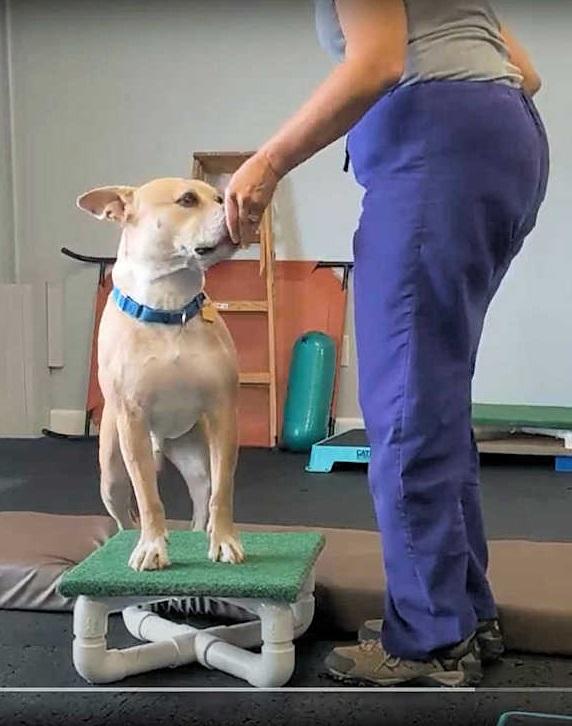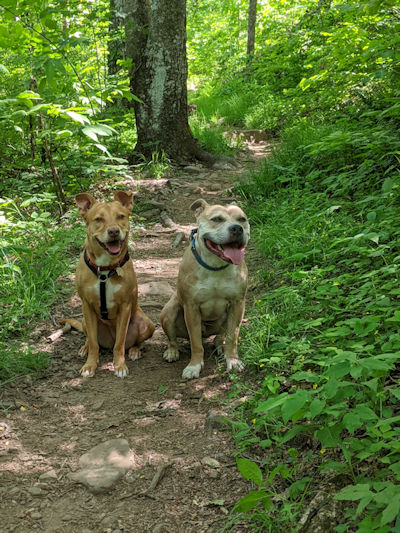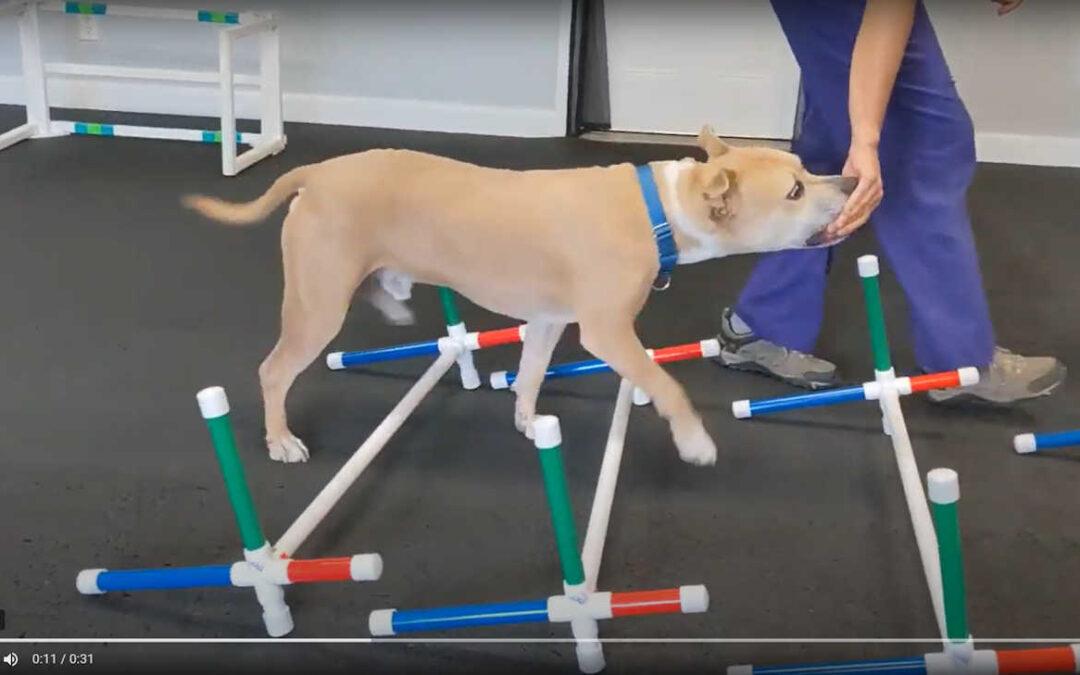Last Summer, our dog Deno started to limp on his right leg on and off. We took him to the vet several times but no conclusive diagnosis was made. The x-rays didn’t show any major injuries either. Yes, the area around his knee was slightly inflamed but it didn’t lead to a CCL tear. So we decreased his activity level and over time he improved to the point that we started taking him on walks again in December.
At the end of January, suddenly he didn’t want to put pressure on his left leg to the point that he lifted his leg and he hopped around. So we took him to an orthopedic surgeon who confirmed my fear of a CCL tear. Not a complete rupture but definitely a tear. Since Deno improved on his right leg, the vet predicted that he could also heal his left leg with proper care and reduced activity.
Since we have to wait until May for a possible TPLO surgery, we had time to get into action. And I didn’t wait. From the moment of the diagnosis we carried him up the stairs (yes, 62 lbs of love keeps my arms strong), and we perform light therapy on both of his knees 1-2 times a day. We bought him a PEMF mat (pulsed electromagnetic field therapy) pad, he is on joint and ligament-supporting supplements. And, just like my grandmother used to do with her own knees, at night I massaged his knees with essential oil tinctures. And Deno has been cooperative through it all.
We have been doing this for the past two months and I haven’t seen him limping for several weeks. Last week, a visit to the vet revealed that he is ready for physical therapy. So yesterday, he had his first PT appointment and he was excited to go to work. The physical therapist confirmed that his knees felt pretty good and the inflammation around the area was almost nonexistent. Now we need to strengthen his muscles to prevent further injury in the future.

Even though we haven’t canceled the surgery appointment yet, I feel confident that we will escape this painful procedure. And why do I share with you his story? Well, two-fold.
1. Pay close attention to your dog’s movements. Looking back, I realized that Deno ran down the stairs without putting his hind legs on the floor for much longer than last summer. In other words, the decline of his knee health started way before last summer. But dogs can hide pain easily. They compensate until it almost is too late. Even though Deno is a Staffordshire Terrier who is known for pushing through pain, he is a sensitive boy. And as soon as we noticed his first limp, we sprung into action.
2. When given the proper nutrients and rest, the body has the power to heal itself. There are so many complementary modalities available, that we can take the healing process into our own hands. Instead of relying completely on doctors or veterinarians, we collaborate with them as health partners in an active way. I have been doing this for my own health and I use the same approach with my dogs.
When I meet with doctors or veterinarians, I am the one who asks questions about everything they suggest. Not because I question them but because I want to understand so that I can make a sound decision. Now over the years, I met one veterinarian who got pissy with me because I questioned his answers, but that just confirmed to me that he wasn’t the right vet. Of course, this requires me to study some things about health and different healing modalities. But since I am ultimately responsible for my own health, I feel this is my duty to maintain my health to the best ability.

With that being said, when it comes to your own health or the health of your dog, I want to remind you that you are the ultimate healer. I feel pretty confident that you will see Deno and me back on the hiking trails later this Spring.

